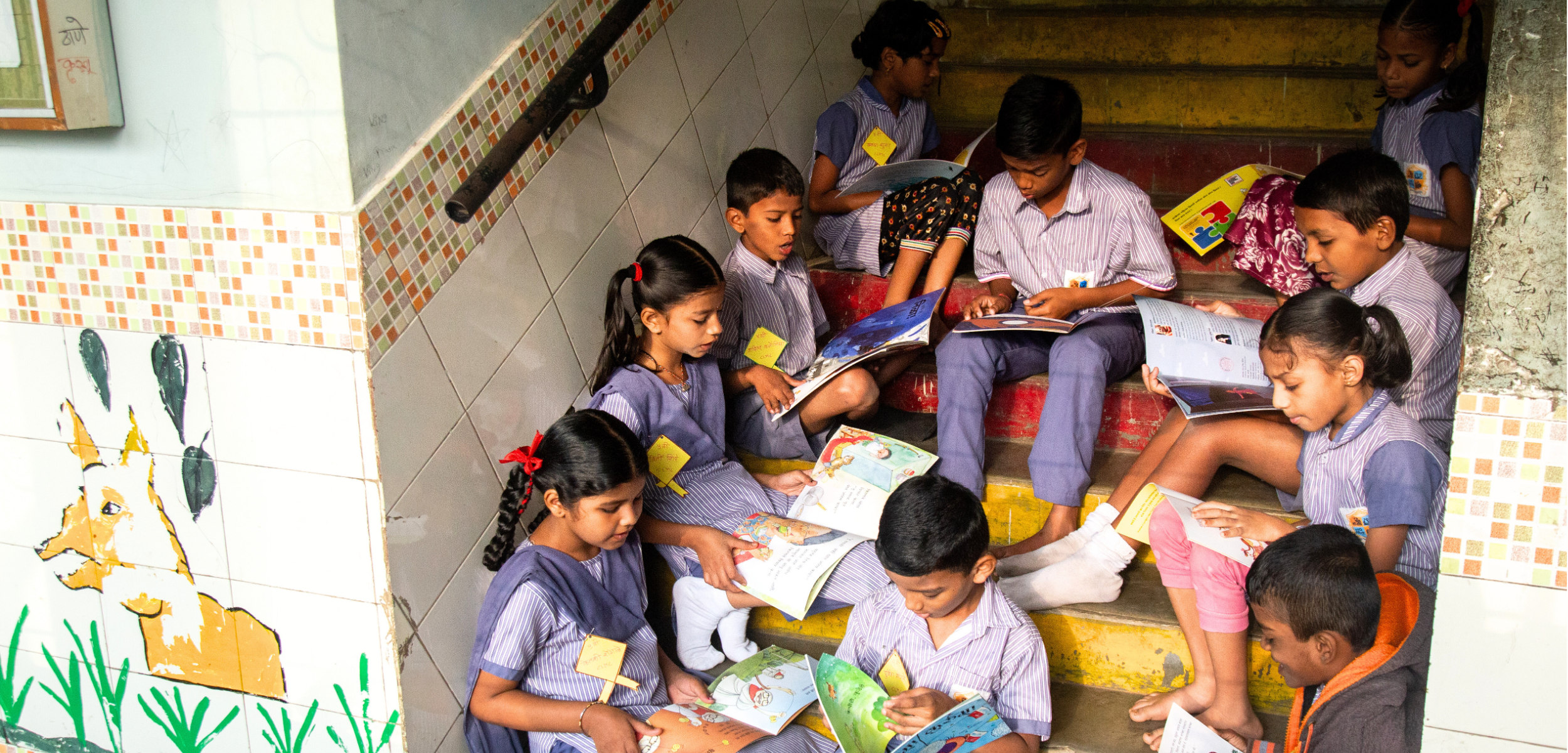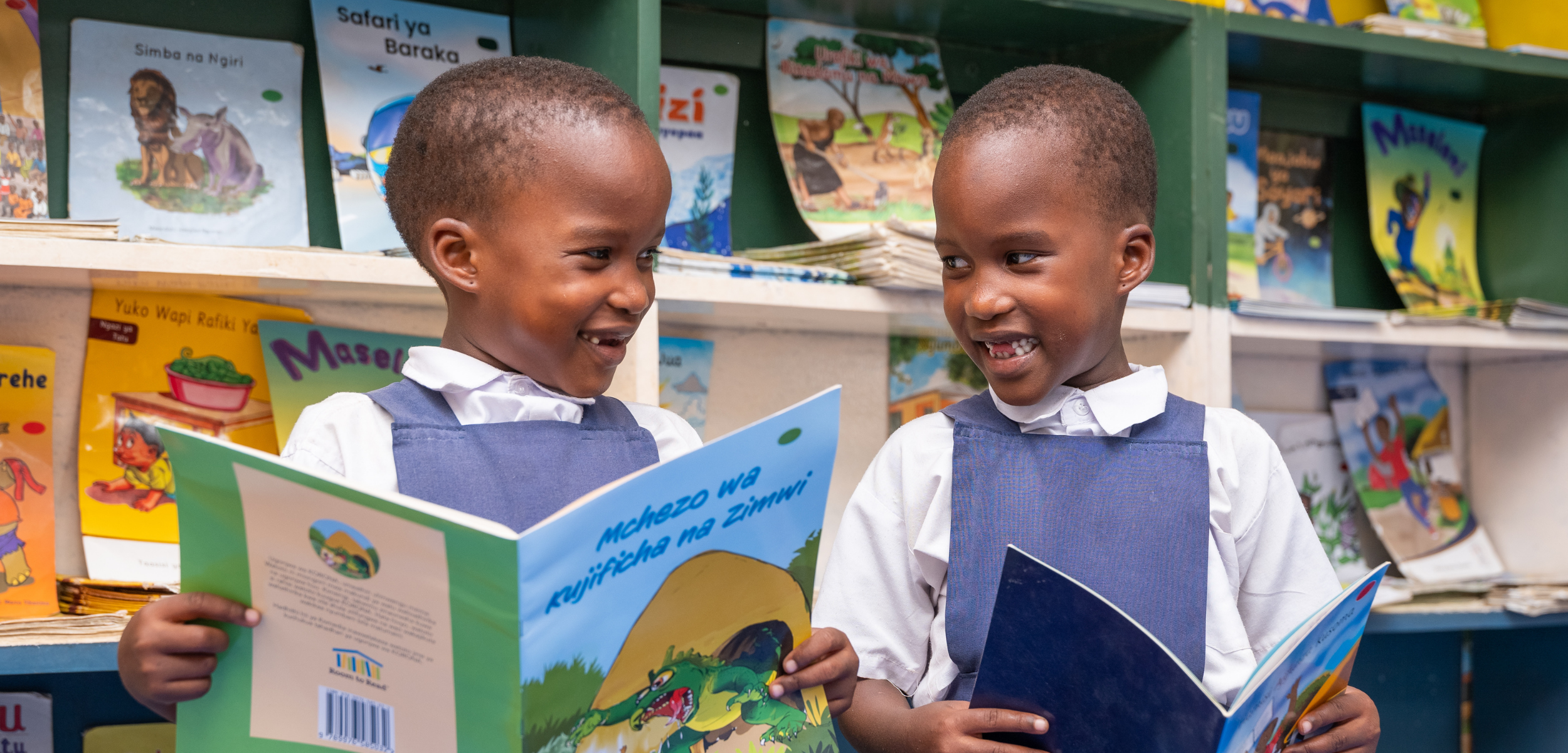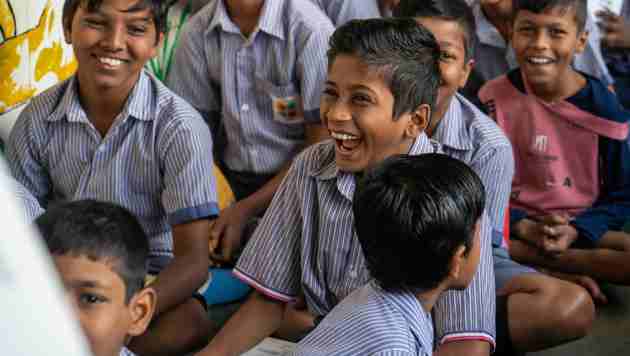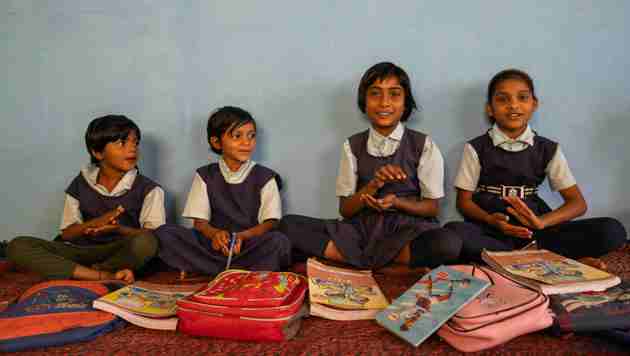Reading in a digital society: Promoting book use around the world
June 06, 2025

By Christabel Pinto
Vice President
Room to Read's Literacy Portfolio
I love making cozy: settling into a comfortable lounging posture and allowing myself to sink into the clutches of a book that fully absorbs me. Such a book compels me to turn over just one more page to see what will happen next, and the rest of the world fades and hours pass me by. Knowing this, I avoid starting a new book unless I know I can complete it in a couple of extended sittings without losing sleep or shirking my responsibilities.
Over the past couple of years, I have been so consumed by adding the joyful labor of raising a child into the mix of my existing responsibilities, that I have rarely picked up a book to read for myself. I have, however, done plenty of reading on my phone. From news articles, to transcripts of podcasts, to text messages, my phone offers me easily interrupted reading that I can do with one hand. I flit between different items, skimming in short snatches, as my attention is led by notifications and embedded links. It turns out that on many days, my leisure reading consists of one-handed, distracted skimming that I can stop at any moment. The single finger scroll has proven to be invaluable when trying to simultaneously do multiple things.
Cognitive neuroscientist, Maryanne Wolf, has extensively studied the impact of digital reading on the brain, and my experience could be a case study for how differently the reading brain engages with printed versus digital media. Digital media make readers susceptible to fragmented attention and the "novelty reflex" — our brain’s instinctual response to a new stimulus. While digital resources enable rapid access to large amounts of information, skimming becomes a defense mechanism against information overload. Skimming is rapid and efficient, but it reduces the use of processes that are needed for deep understanding and critical thinking. Additionally, the constant influx of digital information can erode "cognitive patience" or the ability to engage deeply with complex material. Wolf has found that this erosion results in difficulties focusing on challenging texts and an overall reduction in the quality of attention which is required for learning and developing empathy.
A study led by professor Karen Froud, that measured brain activity in children as they read from printed and digital texts, similarly found that reading from printed materials resulted in deeper semantic processing compared to reading digital texts. There has been a lot of research in this area and not all results have been as clearly supportive of this finding. However, there is an overall trend that indicates a paper-based advantage for deep reading processes especially when it comes to informational texts.
Both Wolf and Froud note that each medium has its advantages. The key takeaway from the research findings on reading in print versus digitally is not that one medium is better than the other but, rather, that each medium makes different requirements of the reading brain and can develop certain cognitive skills at the expense of others.
For young children, aged 0-10, who are learning the foundational skills of reading, printed materials are critical to developing their brain’s full reading circuits. Deep reading is essential for critical thinking, empathy, reflection and understanding complexity, but it also takes time, which is often missing in digital reading habits which are characterized by speed.
The goal of Room to Read’s Literacy Portfolio is to support all children in the early grades of school as they develop literacy skills with a love of reading on their journey to becoming lifelong learners. Responding to the research on how to best achieve this goal, Room to Read is a strong advocate for a variety of quality printed books for young children around the world. Besides the cognitive benefits of deep reading that are associated with printed materials, manipulating a physical book is less distracting than a digital device in the hands of a young child. While digital tools can be used complementarily, they should not be the primary vehicle for learning to read deeply in this critical early period of foundational literacy development.
We cannot ignore the fact that we live in a digital society. My own recent reliance on the single-finger scroll for my reading convenience is a feature of that. Wolf proposes the concept of a "biliterate brain" where individuals know when and how to use different mediums effectively based on their purpose. Children should develop deep reading processes using printed materials, but digital technologies can be integrated in a way that preserves the benefits of deep reading while expanding their reading proficiency to include digital mediums.
Room to Read makes books and other educational resources available digitally through literacycloud.org for adults who serve the reading needs of children. Users of the platform gain access to a larger variety of globally developed children’s literature than they would ever be able to individually possess in print. Exposure to this evolving and growing collection of diverse children’s literature inspires children’s book creators to expand their own creative portfolios and supports educators in their own understanding of books and how to effectively use them with children. Literacycloud.org has been used as a complementary tool by educators in contexts where it would be helpful to project a book on the wall during a read-aloud.
I look forward to the day when I can once again become lost to the world for a few hours at a time, making cozy with a good book and reaping the intellectual and emotional rewards of the experience. But until then, I am committed to every child learning the deep reading skills that will allow them to experience the rewards of immersive, reflective reading. For young children developing foundational literacy skills, this begins with a variety of high-quality books and the wonder that unfolds as they turn each page, experiencing the world coming alive beneath their fingertips.



